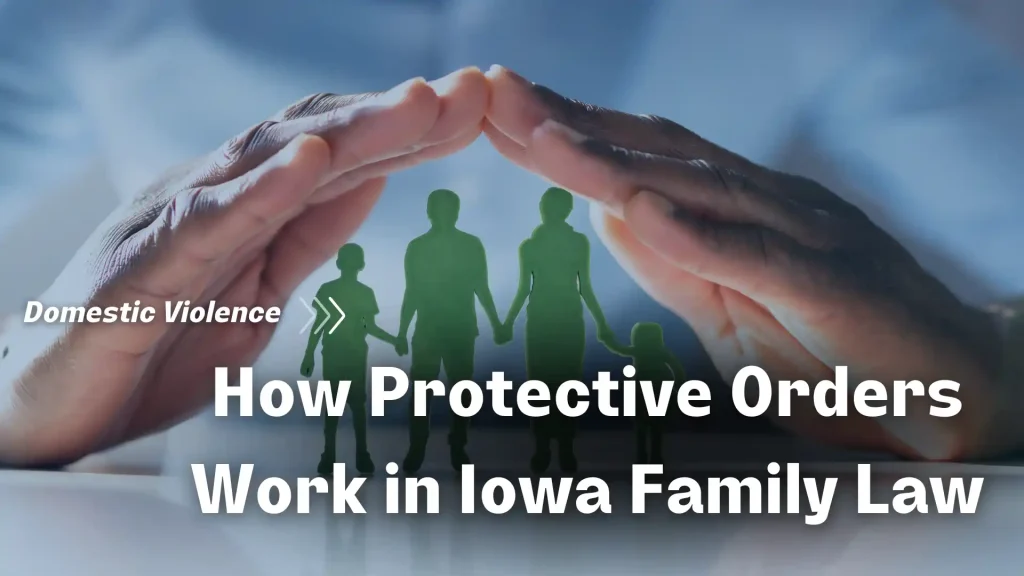
When someone faces threats or abuse from a family member or an intimate partner, Iowa law provides a legal tool called a protective order. These court-issued orders can offer safety measures for victims of domestic violence. Understanding how the protective order process works in Iowa can help people make informed decisions about seeking legal protection—especially if they’re wondering, “How can I get a civil protection order in Iowa, and what steps are involved?
What Is a Protective Order in Iowa?
A protective order in Iowa is a legal document issued by a judge that requires one person to stay away from another. The court creates these orders to protect victims of domestic abuse, harassment, or threats. Iowa follows specific laws under Chapter 236 of the Iowa Code that define domestic abuse and outline the process for obtaining protection.
The order functions as a legal barrier between the victim and the person who has caused harm. Law enforcement officers can enforce a protective order when a judge signs it. If someone violates the terms of the order, they can face criminal charges.
Iowa courts take these orders seriously because they often result from emergencies where someone’s safety is at risk. The legal system recognizes that victims may need immediate protection while longer-term solutions are developed.
Who Can File for a Protective Order?
Iowa law allows specific people to file for a protective order based on their relationship to the alleged abuser. You can file for protection if the person who harmed you is:
- Current or former spouse
- Someone you live with or lived with (including roommates or people in intimate relationships who share a household)
- The parent of your child (even if you were never married or lived together)
- Related by blood or marriage
- A current or former romantic partner (even if you never lived together)
The person filing the petition does not need to pay any court fees. This ensures that financial barriers do not prevent someone from seeking protection when they face danger.
Victims can complete the paperwork alone, but they also have options for assistance. Local domestic violence protection programs often help people fill out forms and understand the process. Some work with a family law attorney who can guide them through each step and represent them in court.
What a Protective Order Can Include
Iowa protective orders can include several different types of restrictions and requirements. The specific terms depend on the situation and what the judge believes is necessary to keep the victim safe.
Standard provisions in protective orders include:
- No Contact Order Requirements – The abuser must not call, text, email, or communicate with the victim through social media.
- Stay Away Orders – The person must remain a specific distance from the victim’s home, workplace, school, or other locations.
- Residence Restrictions – The abuser may be required to move out of a shared home.
- Child Custody Arrangements – The order may include temporary decisions about where children will live and visit as a custody order.
- Weapon Restrictions – The accused individual may be required to surrender firearms or other weapons.
- Pet Protection – The order may include provisions preventing harm to family pets, which abusers sometimes threaten.
The judge has discretion to include whatever terms are necessary to protect the victim and any children involved.
Duration and Renewal of Protective Orders

Iowa protective orders follow a two-step process. First, if the situation is urgent, a judge can issue a temporary protective order without the alleged abuser being present in court. This temporary order typically lasts until a full hearing can be held, usually within 7 to 15 days.
Both parties can present evidence and testimony at the hearing. If the judge deems it necessary, they will issue a final protective order modification lasting one year from the date it was signed.
Before the year ends, victims who still feel unsafe can ask the court to extend the protective order for another year. The extension process requires another hearing where the judge will review whether the abuser continues to pose a threat to the victim’s safety.
People can also ask the court to modify the terms of an existing order if circumstances change. Both victims and respondents can request modifications, though the judge makes the final decision about any changes. If victims no longer want the protection order, they must file paperwork with the court asking to cancel it. The order remains in effect until a judge officially ends it with a new court order.
Please read more about paternity order here: Court-Ordered Paternity Test in Iowa
Contact Arenson Law Group, PC Today
While protective orders in Iowa provide essential safety measures, each situation is unique and may benefit from professional legal guidance. Arenson Law Group, PC helps clients throughout Cedar Rapids and the surrounding areas understand their options in family law matters. Our team is here to help you understand your rights and take the first step toward securing the necessary benefits. For personalized assistance with protective orders and other family law issues, contact our office at (319) 363-8199.
Related Post
Iowa Man wins against a child support court order
What Is the Punishment for Contempt of Family Court in Iowa?